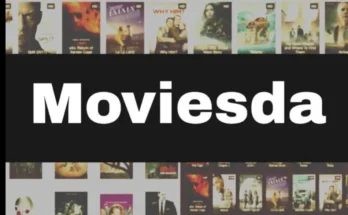The business of live streaming is increasing. Mobile live streaming apps have become a go-to for many organizations and content creators, from news station updates to brands presenting products on IGTV. Live streaming apps enable audiences to see and interact with material in real time, making them a valuable tool for business owners and marketers. Twitch, YouTube, and Periscope are three of today’s most popular video streaming networks.
The good news is that the market is poised for new entrants to thrive. Because of its potential to help businesses increase their reach and gain client loyalty, the live streaming sector is expected to reach $70 billion by 2021. Not to mention the fact that, according to a recent research, 82 percent of media consumers prefer live video to conventional social media posts, and 80 percent prefer it to reading a blog.
Live streamers and broadcasters are understanding that the only way to achieve the following goals is to create their own live streaming website:
- Survive the impending industry collapse
- Ensure their company’s long-term viability
This is a self-contained platform that you control. One where you may stream content, interact with viewers, and cultivate a passionate community around your subject.
Having your own platform allows you to do the following:
- Allow yourself to be creative.
- Maintain control over your revenues.
- More people will be reached
- Have unique branding
How to Create a Website for Live Streaming
- Create a list of features by setting the requirements.
Creating and establishing a website for live streaming is a lengthy process, so get it right the first time. It’s one thing to figure out how to develop a live streaming website; it’s another to figure out how to make one that succeeds.
Before we proceed any further, there are a few questions you should consider:
What kind of content are you going to be streaming? If you want to stream Q&As with industry experts instead of games, the method will be different.
What are your objectives? Do you want your live-streaming website to be a source of leads for your company, a side hustle, a full-time career, or something you do just for fun?
Do you have any plans to monetize your streams? There are a variety of methods to profit from a live streaming website, and the actual processes for setting up a streaming website will vary based on your selected monetization approach.
You’re ready to start setting up a web live streaming video on your website once you’ve given these questions some more thought.
2. Decide on a business plan
You can repurpose your live streams into video on-demand videos once they’ve finished. You’ll be able to choose from three different revenue models: ad-based video on demand, subscription video on demand, and transactional video on demand (AVOD, SVOD, and TVOD).
AVOD: As the name implies, AVOD makes money by displaying advertisements. Because getting your streams in front of as many people as possible is vital in this business strategy, videos are usually free to watch.
Commercials, ad breaks, banner ads on your website, affiliate programmes, and sponsored content are all examples of advertisements.
SVOD: Unlike AVOD, this business strategy does not require a large audience. In fact, even with a small but committed watching audience, you may make a lot of money. Charge a membership price for insider access to live streaming with industry experts, product training, and coaching, to name a few instances of SVOD.
TVOD: You charge a one-time fee per transaction under the TVOD or pay-per-view model. It’s customary to charge a little price for viewers to gain admission to an exclusive event if you’re streaming a masterclass or managed to acquire a notable industry influencer to host a Q&A.
Selling your products, advertising your services, and even collecting donations are all options for making money.
3. Get a domain name and web hosting:
Now that you have your business plan in place, it’s time to create a live streaming website.
You’ll need to pick a domain name first. In the future, your domain name will most likely be your brand’s name, so think about it carefully.
After that, you’ll need to get your domain name registered with a web hosting service. GoDaddy and Bluehost are two major web hosting services. You can choose a domain name that ends in.stream from GoDaddy, which is a terrific approach to instantly explain what your site is about.
WordPress, which is well-known for its content management system, is another excellent alternative.
4. Purchase live-recording gear.
Investing in the right live streaming recording equipment is required to createprofessional-grade video material.
You must choose the correct live streaming camera for the job, which can be as basic as a webcam or as complex as a 4K ultra-HD professional camcorder.
Simple camera setups are excellent for webinars, training sessions, and other simple broadcasts, but more complex broadcasts require more professional settings with TV-grade equipment.
5. Selecting and Coding Software
One issue that many live streamers have is that most cameras are built to record rather than live stream. As a result, you’ll need to select a hardware or software encoder that is compatible with your chosen camera.
Encoding converts your video from one that is optimized for recording and storage to one that is optimal for web transmission. This ensures that your web streaming video is accessible to all of your viewers.
6. Select a Live Website Video Streaming Platform:
When learning how to embed a live streaming video on your website, this is likely the most important step. You’ll need to invest in a professional-grade video streaming service or platform to fully hold the rights to your video material. Although YouTube is the most popular and user-friendly streaming video host, free, consumer-grade systems such as YouTube and Facebook Live have major limits for live streaming video. Those services are intended for video uploading rather than live broadcasting and content management.
Make contact with specialists to assist you in developing a platform with management, tracking insights, and implementing revenue-generating strategies.
7. Incorporate a Live Stream into a Web Page:
The subsequent step is to incorporate a live video feed into your website. To do so, go to your website’s administrative dashboard and open the HTML editor. Every website hosting platform has a slightly different appearance.
The best approach to keep visitors on your website while streaming live video is to use a whitelabeled video player. If you use a platform like Youtube to generate an embed code, you run the risk of users leaving your site and going to Youtube.
Conclusion: Start Live Streaming Immediately!
The only thing left to do now that you know how to set up a live streaming platform is to start filming. After you’ve set up your filming and encoding equipment, tested your internet speed, generated your embed code, and embedded the video, you’re ready to start broadcasting live streaming video.
Guest Post Service By www.guestarticlehouse.com




